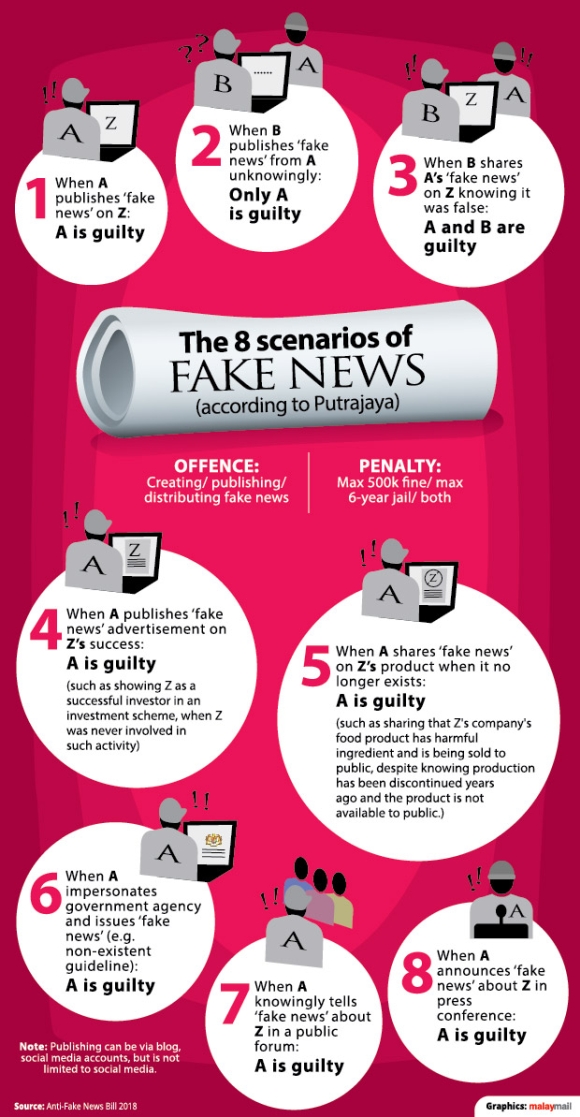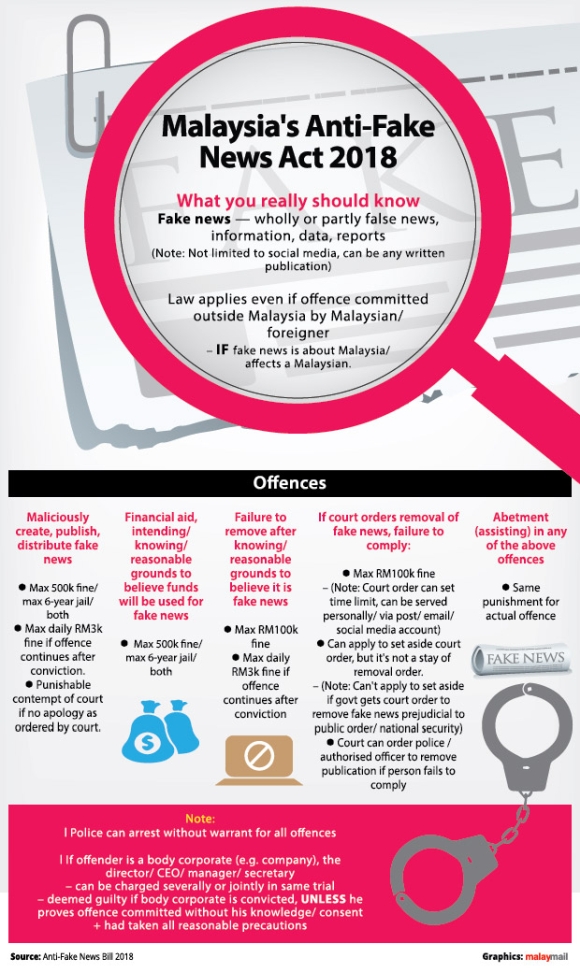You may have heard that Malaysia’s Anti-Fake News Bill 2018 was gazetted and went into effect yesterday, the 11th of April. It’s a bill that’s designed stop the spread of fake news which has become a hot topic of discussion lately.
Now that it’s in effect, what does this mean for you? Well, we went through Anti-Fake News act 2018 and have outlined some of the things you need to know about Malaysia’s new act.
Before we begin, let me just clarify that we’re not lawyers nor are we legal experts, so you might want to consult with an actual lawyer if you have any legal questions. We’re just here to highlight some of the key points in the act that we think you should know about. Sort of like a TL;DR, if you will.
With that out of the way, let’s get into it.
What is “fake news”?
The act defines “fake news” as “any news, information, data and reports, which is or are wholly or party false, whether in the form of features, visuals or audio recordings or in any other form capable of suggesting words or ideas”.
In essence, it’s any piece of information that’s “wholly or partly false” that has made an appearance in any form, be it text, audio or visual. As long as people can see it, watch it, listen to it or read it, odds are it’s covered under this act.
What are the offences?
In the act, the offences are primarily lumped into four main categories.
a. Creating, offering, publishing, printing, distributing, circulating or disseminating fake news.
Any time someone maliciously creates, offers, publishes, prints, distributes, circulates or disseminates fake news, they’re punishable under this offence. It’s worth noting that the term “maliciously” was used to replace the word “knowingly” after a proposal from various parties, including lawmakers.
Additionally, in Section 4 (2), it states that the court may order the convicted person to make an apology to the person affected by the fake news in any manner determined by the court.
If someone is found guilty of this offence, they can be liable to a fine not exceeding RM500,000 or imprisonment for a term not exceeding six years, or both.
In the case of a continuing offence, that person can be liable to a further fine not exceeding RM3,000 for every day the offence continues after conviction.
b. Providing financial assistance for purposes of committing or facilitating the creation and spread of fake news.
This is pretty self-explanatory. Those found guilty can face fine not exceeding RM500,000 or imprisonment for a term not exceeding six years, or both.
c. Failure to remove fake news even after you know it’s fake.
According to the act, it is “the duty of any person” who is in control or has in their possession any publication containing fake news to immediately remove it once they know or has “reasonable grounds to believe” that it contains fake news. If they don’t they’re punishable under this offence.
If found guilty, you can be punished with a fine not exceeding RM100,000. In the case of a continuing offence, a further fine not exceeding RM3,000 will be imposed for each day the offence continues after conviction.
Additionally, the court may also order the removal of a publication that contains fake news and failure to comply will also be punishable under this act with a fine not exceeding RM100,000.
d. Abetting or assisting any of the above offences.
If a punishable act is committed because of the abetment, the person abetting will be punished with the same punishment provided for the offence.
Should you prefer a more visual representation of what we talked about here, the Malay Mail made two awesome infographics detailing the different fake news scenarios as well as a quick rundown of what the entire act.


We hope this article helped. If you’ve spotted any mistakes, please do let us know in the comments below. We’d also love to hear your thoughts on this new act too!
If you want to read the full document, you can head to the Federal Gazette.









